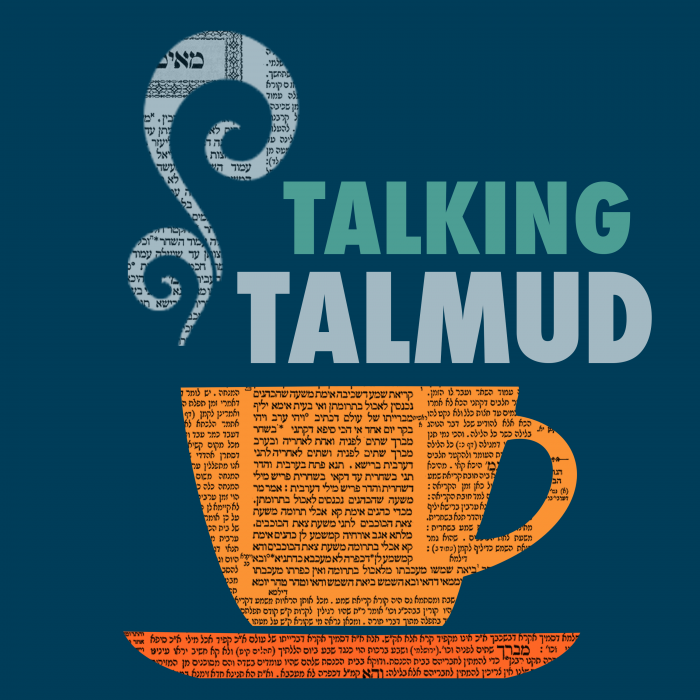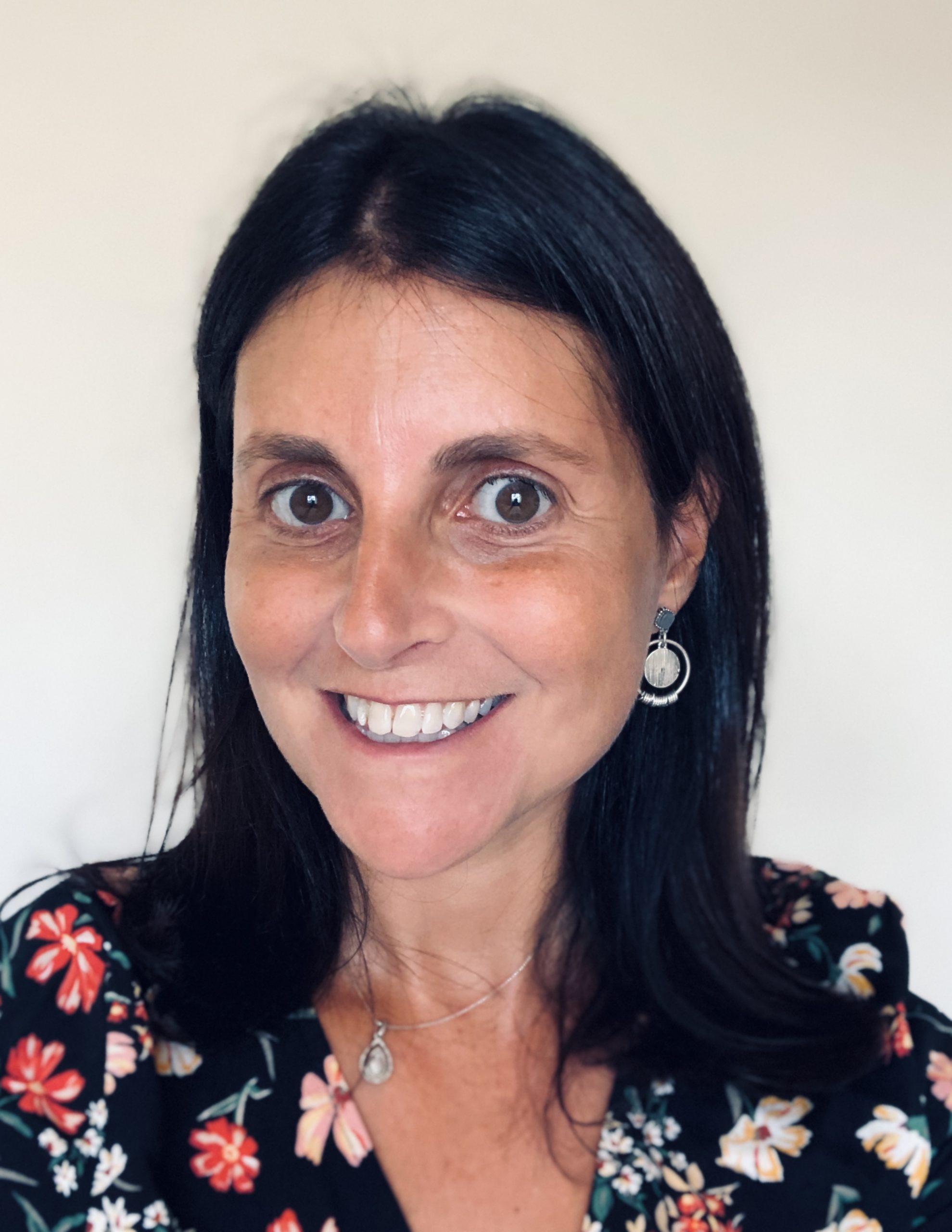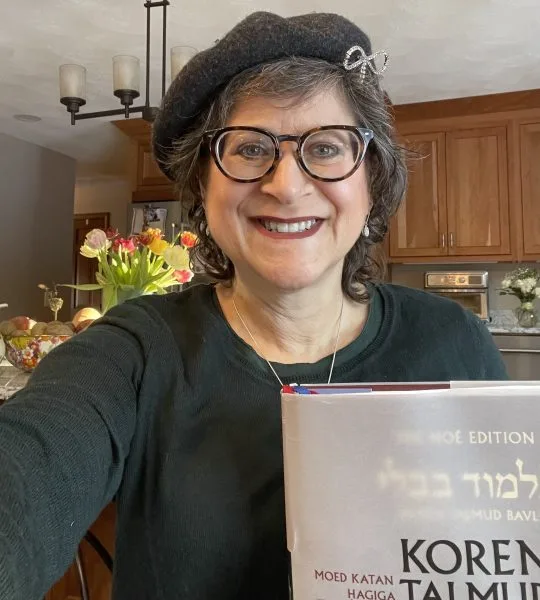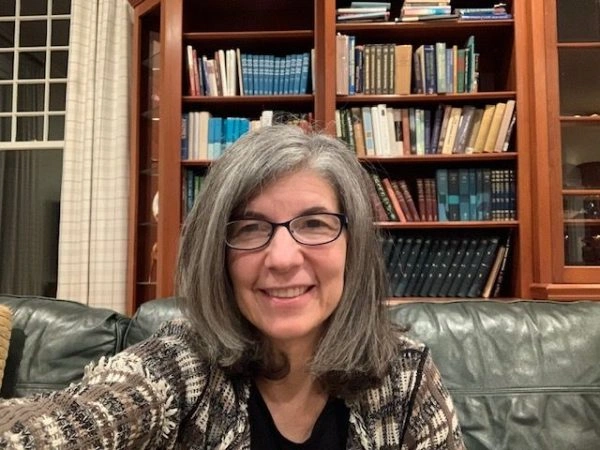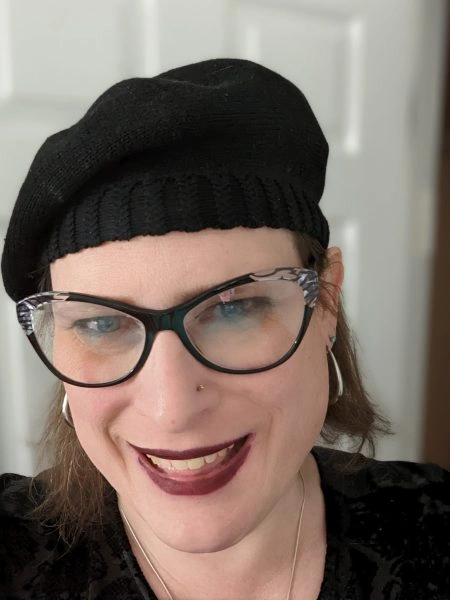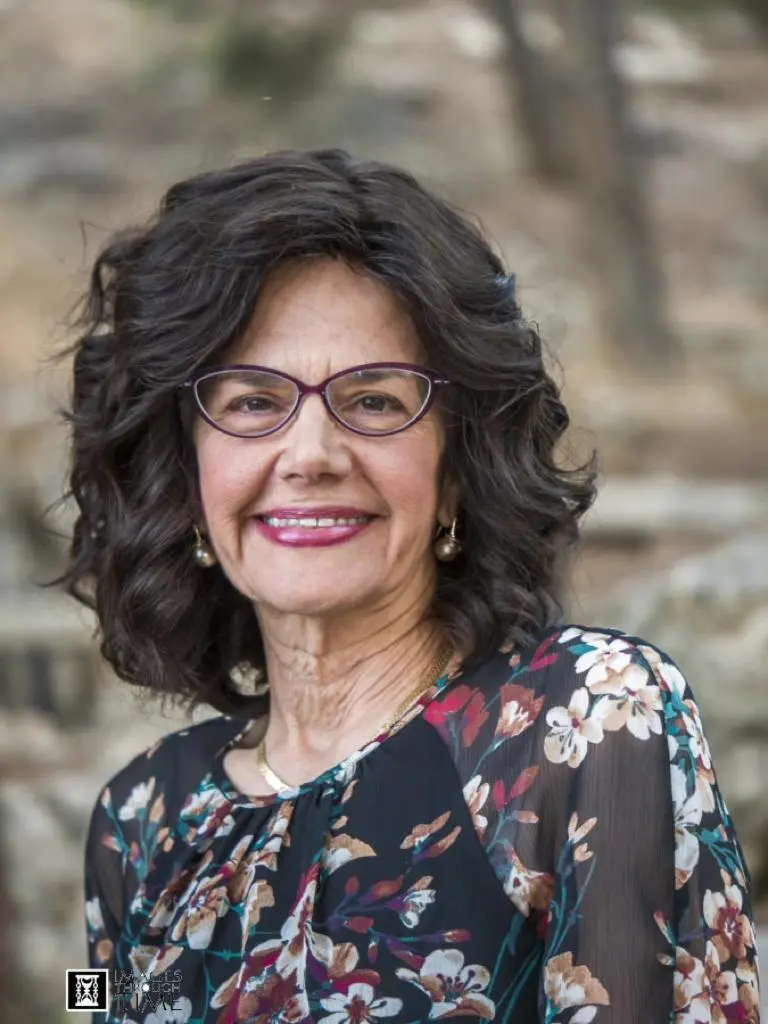Yoma 4
לְטוּמְאַת בֵּיתוֹ.
about the ritual impurity of the priest’s home, i.e., his wife. This is done lest he become impure through relations with a menstruating woman, which is ritual impurity lasting seven days. Therefore, he is removed from his home for seven days.
אֲמַר לֵיהּ רַבִּי יוֹחָנָן לְרֵישׁ לָקִישׁ: בִּשְׁלָמָא לְדִידִי דְּיָלֵיפְנָא מִמִּלּוּאִים, הַיְינוּ דְּתַנְיָא: זֶה וְזֶה מַזִּין עָלָיו כׇּל שִׁבְעָה מִכׇּל חַטָּאוֹת שֶׁהָיוּ שָׁם, דַּהֲוַאי נָמֵי הַזָּאָה בְּמִלּוּאִים. אֶלָּא לְדִידָךְ דְּיָלְפַתְּ מִסִּינַי, הַזָּאָה בְּסִינַי מִי הֲוַאי?
Rabbi Yoḥanan said to Reish Lakish: Granted, according to my opinion, that I derive the halakha of sequestering from the inauguration, that explains that which is taught in the baraita: With regard to both this priest engaged in the burning of the red heifer and that High Priest prior to Yom Kippur, one sprinkles upon him for all seven days the purification water mixed with ashes from samples from all the previous red heifer sin-offerings that were safeguarded there in the Temple. The reason for this practice is that there was also sprinkling during the inauguration. However, according to your opinion, that you derive it from Sinai, was there in fact sprinkling at Sinai? According to your opinion, why are the priests sprinkled?
אֲמַר לֵיהּ: וּלְטַעְמָיךְ מִי נִיחָא? בְּמִלּוּאִים דָּם, הָכָא מַיִם! הָא לָא קַשְׁיָא, דְּתָנֵי רַבִּי חִיָּיא: נִכְנְסוּ מַיִם תַּחַת דָּם. אֶלָּא לְדִידָךְ, הַזָּאָה בְּסִינַי מִי הֲוַאי? אֲמַר לֵיהּ: מַעֲלָה בְּעָלְמָא.
Reish Lakish said to him: And according to your reasoning, does it work out well? At the inauguration, the sprinkling was with blood; here, the sprinkling was with water. Rabbi Yoḥanan answered: That is not difficult, as Rabbi Ḥiyya taught: Water replaced blood, but both have the status of sprinkling. However, according to your reasoning, at Sinai, was there sprinkling at all? Reish Lakish said to him: The Sages merely established a higher standard, and this sprinkling is not a requirement.
תַּנְיָא כְּווֹתֵיהּ דְּרַבִּי יוֹחָנָן, תַּנְיָא כְּווֹתֵיהּ דְּרֵישׁ לָקִישׁ. תַּנְיָא כְּווֹתֵיהּ דְּרַבִּי יוֹחָנָן: ״בְּזֹאת יָבֹא אַהֲרֹן אֶל הַקֹּדֶשׁ״, בְּמַה שֶּׁאָמוּר בָּעִנְיָן, מַאי הִיא — בְּעִנְיָן דְּמִלּוּאִים. וּמָה אָמוּר בְּעִנְיָן דְּמִלּוּאִים — אַהֲרֹן פֵּירַשׁ שִׁבְעָה וְשִׁמֵּשׁ יוֹם אֶחָד, וּמֹשֶׁה מָסַר לוֹ כׇּל שִׁבְעָה כְּדֵי לְחַנְּכוֹ בָּעֲבוֹדָה.
§ The Gemara comments: A baraita was taught in accordance with the opinion of Rabbi Yoḥanan that the sequestering is derived from the inauguration; and a baraita was taught in accordance with the opinion of Reish Lakish that it is derived from Sinai. The Gemara elaborates: A baraita was taught in accordance with the opinion of Rabbi Yoḥanan: It was stated with regard to the inauguration: “With this Aaron will come into the Sanctuary, with a young bull for a sin-offering and a ram for a burnt-offering” (Leviticus 16:3). To what is the term: With this, referring? It is referring to that which is stated in the matter. What is the matter? It is the matter of the inauguration. In the manner that the priest was prepared for the inauguration, so too is he prepared for Yom Kippur. And what is stated in the matter of the inauguration? It is that Aaron the priest withdrew for seven days and served one day, and Moses transmitted the Torah guidelines to him all seven days in order to train him in the Sanctuary service.
וְאַף לְדוֹרוֹת כֹּהֵן גָּדוֹל פּוֹרֵשׁ שִׁבְעָה וּמְשַׁמֵּשׁ יוֹם אֶחָד, וּשְׁנֵי תַּלְמִידֵי חֲכָמִים מִתַּלְמִידָיו שֶׁל מֹשֶׁה — לְאַפּוֹקֵי צַדּוּקִין, מוֹסְרִין לוֹ כׇּל שִׁבְעָה כְּדֵי לְחַנְּכוֹ בָּעֲבוֹדָה.
And throughout the generations as well, the High Priest withdraws seven days prior to Yom Kippur and serves one day. And two Torah scholars from among the students of Moses, to the exclusion of Sadducees, who are not students of Moses, transmit the Torah guidelines to him all seven days in order to train him in the Sanctuary service.
מִכָּאן אָמְרוּ: שִׁבְעַת יָמִים קוֹדֶם יוֹם הַכִּפּוּרִים מַפְרִישִׁין כֹּהֵן גָּדוֹל מִבֵּיתוֹ לְלִשְׁכַּת פַּרְהֶדְרִין. וּכְשֵׁם שֶׁמַּפְרִישִׁין כֹּהֵן גָּדוֹל, כָּךְ מַפְרִישִׁין כֹּהֵן הַשּׂוֹרֵף אֶת הַפָּרָה לַלִּשְׁכָּה שֶׁעַל פְּנֵי הַבִּירָה צָפוֹנָה מִזְרָחָה. וְאֶחָד זֶה וְאֶחָד זֶה מַזִּין עָלָיו כׇּל שִׁבְעָה מִכׇּל חַטָּאוֹת שֶׁהָיוּ שָׁם.
From there the Sages said in the mishna: Seven days prior to Yom Kippur the Sages would remove the High Priest, who performs the entire Yom Kippur service, from his house to the Chamber of Parhedrin; and just as the Sages would remove the High Priest, so do they remove the priest who burns the heifer, from his house to the chamber that was before the bira at the northeast corner of the courtyard on the Temple Mount. And with regard to both this priest whom the Sages sequester prior to Yom Kippur and that priest whom the Sages sequester prior to engaging in the burning of the heifer, one sprinkles upon him, for all seven days of sequestering, the purification water with ashes from all the previous red heifer sin-offerings that were safeguarded there in the Temple.
וְאִם תֹּאמַר: בְּמִלּוּאִים דָּם, הָכָא מַיִם, אָמַרְתָּ: נִכְנְסוּ מַיִם תַּחַת דָּם. וְאוֹמֵר ״כַּאֲשֶׁר עָשָׂה בַּיּוֹם הַזֶּה צִוָּה ה׳ לַעֲשׂוֹת לְכַפֵּר עֲלֵיכֶם״. ״לַעֲשׂוֹת״ — אֵלּוּ מַעֲשֵׂה פָרָה, ״לְכַפֵּר״ — אֵלּוּ מַעֲשֵׂה יוֹם הַכִּפּוּרִים.
And if you say that at the inauguration the sprinkling was with blood, and here the sprinkling was with water, you said: Water replaced blood. And it says in the verse: “As has been done this day, so the Lord has commanded to do, to make atonement for you” (Leviticus 8:34). To do, these are the actions performed in the burning of the red heifer; to make atonement, these are the actions performed on Yom Kippur. This baraita, then, is proof for the opinion of Rabbi Yoḥanan.
וְהַאי ״בְּזֹאת״ מִיבְּעֵי לֵיהּ לְגוּפֵיהּ, בְּפַר בֶּן בָּקָר לְחַטָּאת וְאַיִל לְעוֹלָה! אָמְרִי: אִי לְקׇרְבָּן לְחוֹדֵיהּ, לֵימָא קְרָא ״בְּזֶה״ אוֹ ״בְּאֵלֶּה״, מַאי ״בָּזֹאת״ — שָׁמְעַתְּ מִינַּהּ תַּרְתֵּי.
The Gemara analyzes the baraita. But the term: With this [bezot], is required for the meaning of the verse itself; the priest is required to bring a young bull for a sin-offering and a ram for a burnt-offering. The Sages say in response: If the term comes to teach only with regard to the offerings, let the verse say: With this [bezeh], in the masculine, referring to the bull, or: With these [be’elleh], referring to the bull and the ram. What, then, may be derived from the use of the feminine term bezot, which refers to neither the bull nor the ram? Learn from it two conclusions; one with regard to the offerings and one with regard to sequestering.
מַאי ״וְאוֹמֵר״? וְכִי תֵּימָא: יוֹם הַכִּפּוּרִים קַמָּא הוּא דְּבָעֵי פְּרִישָׁה, כִּדְאַשְׁכְּחַן בְּמִלּוּאִים אֲבָל בְּיוֹם הַכִּפּוּרִים דְּעָלְמָא לָא. אִי נָמֵי: כֹּהֵן גָּדוֹל קַמָּא הוּא דְּבָעֵי פְּרִישָׁה, אֲבָל כֹּהֵן גָּדוֹל בְּעָלְמָא לָא, תָּא שְׁמַע: ״כַּאֲשֶׁר עָשָׂה וְכוּ׳״.
The Gemara continues its analysis of the baraita. What is the meaning of the term: And it says? Why does the baraita cite an additional proof from another verse? Why wasn’t the first proof sufficient? And if you say that it is on the first Yom Kippur when Aaron performed the service that the High Priest requires sequestering, as we find in the inauguration when the priests were sequestered before being consecrated as priests, but on Yom Kippur in general, no, subsequent High Priests do not require sequestering; or alternatively, if you say: It is the first High Priest who requires sequestering, as did all the priests during the inauguration, but subsequent High Priests in general, no, they do not require sequestering before Yom Kippur; then come and hear that which it says in the verse: “As has been done this day, so the Lord has commanded to do,” meaning that this is a mitzva for all generations.
תַּנְיָא כְּווֹתֵיהּ דְּרֵישׁ לָקִישׁ: מֹשֶׁה עָלָה בֶּעָנָן, וְנִתְכַּסָּה בֶּעָנָן, וְנִתְקַדֵּשׁ בֶּעָנָן, כְּדֵי לְקַבֵּל תּוֹרָה לְיִשְׂרָאֵל בִּקְדוּשָּׁה, שֶׁנֶּאֱמַר: ״וַיִּשְׁכּוֹן כְּבוֹד ה׳ עַל הַר סִינַי״ — זֶה הָיָה מַעֲשֶׂה אַחַר עֲשֶׂרֶת הַדִּבְּרוֹת, שֶׁהָיוּ תְּחִלָּה לְאַרְבָּעִים יוֹם, דִּבְרֵי רַבִּי יוֹסֵי הַגְּלִילִי.
§ And a baraita was taught in accordance with the opinion of Reish Lakish that sequestering is derived from Sinai: Moses ascended in the cloud, and was covered in the cloud, and was sanctified in the cloud, in order to receive the Torah for the Jewish people in sanctity, as it is stated: “And the glory of the Lord abode upon Mount Sinai and the cloud covered him six days, and He called to Moses on the seventh day from the midst of the cloud” (Exodus 24:16). This was an incident that occurred after the revelation of the Ten Commandments to the Jewish people, and these six days were the beginning of the forty days that Moses was on the mountain (see Exodus 24:18); this is the statement of Rabbi Yosei HaGelili. The opinion of Rabbi Yosei HaGelili corresponds to that of Reish Lakish; Moses withdrew for six days before receiving permission to stand in the presence of God.
רַבִּי עֲקִיבָא אוֹמֵר: ״וַיִּשְׁכּוֹן כְּבוֹד ה׳״ — מֵרֹאשׁ חוֹדֶשׁ.
Rabbi Akiva says: This incident occurred before the revelation of the Ten Commandments to the Jewish people, and when the Torah says: “And the glory of the Lord abode upon Mount Sinai,” it is referring to the revelation of the Divine Presence that began on the New Moon of Sivan, which was six days before the revelation of the Ten Commandments.
״וַיְכַסֵּהוּ הֶעָנָן״, לָהָר. ״וַיִּקְרָא אֶל מֹשֶׁה״ — [מֹשֶׁה] וְכׇל יִשְׂרָאֵל עוֹמְדִין, וְלֹא בָּא הַכָּתוּב אֶלָּא לַחְלֹק כָּבוֹד לְמֹשֶׁה. רַבִּי נָתָן אוֹמֵר: לֹא בָּא הַכָּתוּב אֶלָּא לְמָרֵק אֲכִילָה וּשְׁתִיָּה שֶׁבְּמֵעָיו, לְשׂוּמוֹ כְּמַלְאֲכֵי הַשָּׁרֵת.
And that which is written: “And the cloud covered him,” means the cloud covered it, the mountain, and not him, Moses. “And He called to Moses”; Moses and all of the Jewish people were standing at the foot of the mountain and listening, and if God did not mean that Moses was to climb the mountain, why did He call him? The verse comes only to accord deference to Moses, as the entire nation heard God address him. Rabbi Natan says: Moses was in fact called to enter the cloud; however, his entrance was not for the purpose of sequestering and purifying him, rather, the verse comes only to cleanse the food and drink that was in his intestines, to render him like the ministering angels who require neither food nor drink.
רַבִּי מַתְיָא בֶּן חָרָשׁ אוֹמֵר: לֹא בָּא הַכָּתוּב אֶלָּא לְאַיֵּים עָלָיו, כְּדֵי שֶׁתְּהֵא תּוֹרָה נִיתֶּנֶת בְּאֵימָה, בִּרְתֵת וּבְזִיעַ, שֶׁנֶּאֱמַר: ״עִבְדוּ אֶת ה׳ בְּיִרְאָה וְגִילוּ בִּרְעָדָה״. מַאי ״וְגִילוּ בִּרְעָדָה״? אָמַר רַב אַדָּא בַּר מַתְנָה אָמַר רַב: בִּמְקוֹם גִּילָה שָׁם תְּהֵא רְעָדָה.
Rabbi Matya ben Ḥarash says: The verse calling Moses into the cloud comes only to intimidate Moses, to instill in him a sense of awe of the Creator, so that the Torah would be delivered with reverence, with quaking and with trembling, as it is stated: “Serve the Lord with awe, and rejoice with trembling” (Psalms 2:11). Apropos the end of the verse, the Gemara asks: What is the meaning of “and rejoice with trembling”? Joy and trembling seem contradictory. Rav Adda bar Mattana said that Rav said: Where there is the joy of fulfilling a mitzva, there will be the trembling of the awe of Heaven there.
בְּמַאי קָא מִיפַּלְגִי רַבִּי יוֹסֵי הַגְּלִילִי וְרַבִּי עֲקִיבָא? בִּפְלוּגְתָּא דְּהָנֵי תַּנָּאֵי, דְּתַנְיָא: בְּשִׁשָּׁה בַּחוֹדֶשׁ נִיתְּנָה תּוֹרָה לְיִשְׂרָאֵל, רַבִּי יוֹסֵי אוֹמֵר: בְּשִׁבְעָה בּוֹ. מַאן דְּאָמַר בְּשִׁשָּׁה: בְּשִׁשָּׁה נִיתְּנָה, וּבְשִׁבְעָה עָלָה (דִּכְתִיב: ״וַיִּקְרָא אֶל מֹשֶׁה בַּיּוֹם הַשְּׁבִיעִי״). מַאן דְּאָמַר בְּשִׁבְעָה: בְּשִׁבְעָה נִיתְּנָה, וּבְשִׁבְעָה עָלָה, [דִּכְתִיב: ״וַיִּקְרָא אֶל מֹשֶׁה בַּיּוֹם הַשְּׁבִיעִי״].
§ Apropos the interpretation of the verse with regard to revelation, the Gemara asks: With regard to what do Rabbi Yosei HaGelili and Rabbi Akiva disagree? The Gemara explains that their dispute is parallel to the dispute between these other tanna’im, as it was taught in a baraita: On the sixth day of the month of Sivan, the Torah, the Ten Commandments, was given to the Jewish people. Rabbi Yosei says: It was on the seventh day of the month. According to the one who said that it was on the sixth, the Torah was given on the sixth, which is the day of the revelation of the Ten Commandments, and on the seventh day of the month Moses ascended the mountain, as it is written: “And He called to Moses on the seventh day” (Exodus 24:16). According to the one who said that the Torah was given on the seventh of the month, it was given on the seventh and Moses ascended on the seventh, as it is written: “And he called to Moses on the seventh day.”
רַבִּי יוֹסֵי הַגְּלִילִי סָבַר לַהּ כְּתַנָּא קַמָּא, דְּאָמַר בְּשִׁשָּׁה בַּחוֹדֶשׁ נִיתְּנָה תּוֹרָה, הִלְכָּךְ זֶה הָיָה מַעֲשֶׂה אַחַר עֲשֶׂרֶת הַדִּבְּרוֹת. ״וַיִּשְׁכּוֹן כְּבוֹד ה׳ עַל הַר סִינַי וַיְכַסֵּהוּ הֶעָנָן שֵׁשֶׁת יָמִים״ — לְמֹשֶׁה, ״וַיִּקְרָא אֶל מֹשֶׁה בַּיּוֹם הַשְּׁבִיעִי״ — לְקַבּוֹלֵי שְׁאָר תּוֹרָה. דְּאִי סָלְקָא דַעְתָּךְ ״וַיִּשְׁכּוֹן כְּבוֹד ה׳״ מֵרֹאשׁ חוֹדֶשׁ, ״וַיְכַסֵּהוּ הֶעָנָן לָהָר וַיִּקְרָא אֶל מֹשֶׁה בַּיּוֹם הַשְּׁבִיעִי״ לְקַבּוֹלֵי עֲשֶׂרֶת הַדִּבְּרוֹת, הָא קַבִּילוּ לְהוּ מִשִּׁשָּׁה, וְהָא אִסְתַּלַּק עָנָן מִשִּׁשָּׁה!
The Gemara proceeds to link the two disputes. Rabbi Yosei HaGelili holds in accordance with the opinion of the first tanna in the baraita, who said that it was on the sixth of the month that the Torah was given; therefore, this incident occurred after the revelation of the Ten Commandments. That is why he explains the verse “And the glory of the Lord abode on Mount Sinai and the cloud covered him for six days” to mean that the cloud covered Moses, and He called to Moses on the seventh day to receive the rest of the Torah. As, should it enter your mind to interpret the verse as follows: “And the glory of the Lord abode” from the New Moon of Sivan; “And the cloud covered it,” the mountain; “And He called to Moses on the seventh day,” to receive only the Ten Commandments; didn’t they already receive the Ten Commandments on the sixth of the month, and the cloud that was on the mountain already departed on the sixth of the month?
וְרַבִּי עֲקִיבָא סָבַר לַהּ כְּרַבִּי יוֹסֵי, דְּאָמַר: בְּשִׁבְעָה בַּחֹדֶשׁ נִיתְּנָה תּוֹרָה לְיִשְׂרָאֵל. בִּשְׁלָמָא לְרַבִּי עֲקִיבָא, הַיְינוּ דְּמַשְׁכַּחַתְּ לַהּ בְּשִׁבְעָה עָשָׂר בְּתַמּוּז נִשְׁתַּבְּרוּ הַלּוּחוֹת: עֶשְׂרִין וְאַרְבְּעָה דְּסִיוָן, וְשִׁיתְּסַר דְּתַמּוּז, מָלוּ לְהוּ אַרְבְּעִין יוֹמִין דַּהֲוָה בָּהָר, וּבְשִׁבְסַר בְּתַמּוּז נְחֵית וַאֲתָא וְתַבְרִינְהוּ לְלוּחוֹת.
And Rabbi Akiva holds in accordance with the opinion of Rabbi Yosei, who said that on the seventh of the month the Torah was given to the Jewish people. That is why Moses was summoned on the seventh of the month immediately after the revelation of the Ten Commandments. The Gemara asks: Granted, according to the opinion of Rabbi Akiva that the Torah was given on the seventh of Sivan and Moses then proceeded to climb the mountain and remain there for forty days, that explains the calculation that you find: On the seventeenth of Tammuz the tablets were shattered, according to the standard tradition. How so? Calculate twenty-four days until the end of Sivan and sixteen days of Tammuz; they total the forty days that he was on the mountain. On the seventeenth of Tammuz he descended from the mountain and came and shattered the tablets.
אֶלָּא לְרַבִּי יוֹסֵי הַגְּלִילִי, דְּאָמַר: שִׁשָּׁה דִפְרִישָׁה וְאַרְבְּעִין דְּהַר, עַד עֶשְׂרִין וּתְלָת בְּתַמּוּז לָא אִתַּבּוּר לוּחוֹת! אָמַר לְךָ רַבִּי יוֹסֵי הַגְּלִילִי: אַרְבְּעִין דְּהַר בַּהֲדֵי שִׁשָּׁה דִפְרִישָׁה.
However, according to Rabbi Yosei HaGelili, who said: There were six days of sequestering after the Torah was given and an additional forty days that Moses was on the mountain, the tablets were not shattered until the twenty-third of Tammuz, contrary to the standard tradition. Rabbi Yosei HaGelili could have said to you: The forty days that Moses was on the mountain include the six days of sequestering.
אָמַר מָר: ״וַיִּקְרָא אֶל מֹשֶׁה״ — מֹשֶׁה וְכׇל יִשְׂרָאֵל עוֹמְדִין, מְסַיַּיע לֵיהּ לְרַבִּי אֶלְעָזָר. דְּאָמַר רַבִּי אֶלְעָזָר: ״וַיִּקְרָא אֶל מֹשֶׁה״ — מֹשֶׁה וְכׇל יִשְׂרָאֵל עוֹמְדִין, וְלֹא בָּא הַכָּתוּב אֶלָּא לַחְלֹק לוֹ כָּבוֹד לְמֹשֶׁה.
§ The Master said in that baraita cited above that when the Torah says: “And He called to Moses,” it means that Moses and all of the Jewish people were standing and listening. The Gemara suggests that this supports the opinion of Rabbi Elazar, as Rabbi Elazar said that when the Torah says: “And He called to Moses,” it means that Moses and all of the Jewish people were standing and listening and the verse comes only to accord deference to Moses. From Rabbi Elazar’s statement it is clear that all of Israel heard the voice of God.
מֵיתִיבִי: ״קוֹל לוֹ״, ״קוֹל אֵלָיו״ — מֹשֶׁה שָׁמַע וְכׇל יִשְׂרָאֵל לֹא שָׁמְעוּ! לָא קַשְׁיָא: הָא — בְּסִינַי, הָא — בְּאֹהֶל מוֹעֵד. וְאִי בָּעֵית אֵימָא, לָא קַשְׁיָא: הָא — בִּקְרִיאָה, הָא — בְּדִבּוּר.
The Gemara raises an objection: The Torah states: “And when Moses went into the Tent of Meeting that He might speak with him, then he heard the voice speaking unto him from above the Ark cover that was upon the Ark of the Testimony, from between the two cherubs; and He spoke unto him” (Numbers 7:89). The Torah could have said: He heard the voice speaking to him; however, instead the verse said: He heard the voice speaking unto him, indicating that the voice reached him alone. Moses alone heard God’s voice and all of the Jewish people did not hear it. The Gemara answers: This is not difficult. This case, where everyone heard God’s voice, was at Sinai. That case, where Moses alone heard God’s voice, was at the Tent of Meeting. Or if you wish, say instead an alternative resolution. This is not difficult; when God addressed Moses by calling to him, everyone heard; that which God subsequently communicated by speaking, Moses alone heard.
רַבִּי זְרִיקָא רָמֵי קְרָאֵי קַמֵּיהּ דְּרַבִּי אֶלְעָזָר, וְאָמְרִי לַהּ אָמַר רַבִּי זְרִיקָא: רַבִּי אֶלְעָזָר רָמֵי, כְּתִיב: ״וְלֹא יָכוֹל מֹשֶׁה לָבֹא אֶל אֹהֶל מוֹעֵד כִּי שָׁכַן עָלָיו הֶעָנָן״, וּכְתִיב: ״וַיָּבֹא מֹשֶׁה בְּתוֹךְ הֶעָנָן״! מְלַמֵּד שֶׁתְּפָסוֹ הַקָּדוֹשׁ בָּרוּךְ הוּא לְמֹשֶׁה וֶהֱבִיאוֹ בֶּעָנָן.
Rabbi Zerika raised a contradiction between verses before Rabbi Elazar, and some say that Rabbi Zerika said that Rabbi Elazar raised a contradiction: It is written in one place: “And Moses was not able to enter into the Tent of Meeting because the cloud dwelt on it” (Exodus 40:35), as Moses was unable to enter the cloud. And it is written elsewhere: “And Moses came into the cloud” (Exodus 24:18). This teaches that the Holy One, Blessed be He, grabbed Moses and brought him into the cloud since he could not enter on his own.
דְּבֵי רַבִּי יִשְׁמָעֵאל תָּנָא: נֶאֱמַר כָּאן ״בְּתוֹךְ״, וְנֶאֱמַר לְהַלָּן ״בְּתוֹךְ״ — ״וְיָבוֹאוּ בְנֵי יִשְׂרָאֵל בְּתוֹךְ הַיָּם״. מָה לְהַלָּן שְׁבִיל, דִּכְתִיב: ״וְהַמַּיִם לָהֶם חוֹמָה״, אַף כָּאן שְׁבִיל.
The school of Rabbi Yishmael taught: There is a verbal analogy that resolves this contradiction. It is stated here: “And Moses came into the cloud,” and it is stated below, in another verse: “And the children of Israel went into the sea on dry land” (Exodus 14:22); Just as below, there was a path within the sea, as it is written: “And the water was a wall for them” (Exodus 14:22), here too, there was a path through the cloud, but Moses did not actually enter the cloud.
״וַיִּקְרָא אֶל מֹשֶׁה וַיְדַבֵּר״, לָמָּה הִקְדִּים קְרִיאָה לְדִיבּוּר? לִימְּדָה תּוֹרָה דֶּרֶךְ אֶרֶץ, שֶׁלֹּא יֹאמַר אָדָם דָּבָר לַחֲבֵירוֹ אֶלָּא אִם כֵּן קוֹרֵהוּ. מְסַיַּיע לֵיהּ לְרַבִּי חֲנִינָא. דְּאָמַר רַבִּי חֲנִינָא: לֹא יֹאמַר אָדָם דָּבָר לַחֲבֵירוֹ אֶלָּא אִם כֵּן קוֹרֵהוּ. ״לֵאמֹר״, אָמַר רַבִּי (מוּסְיָא בַּר בְּרֵיהּ דְּרַבִּי מַסְיָא מִשְּׁמֵיהּ דְּרַבִּי מוּסְיָא) רַבָּה: מִנַּיִין לָאוֹמֵר דָּבָר לַחֲבֵירוֹ שֶׁהוּא בְּבַל יֹאמַר עַד שֶׁיֹּאמַר לוֹ: לֵךְ אֱמוֹר — שֶׁנֶּאֱמַר: ״וַיְדַבֵּר ה׳ אֵלָיו מֵאֹהֶל מוֹעֵד לֵאמֹר״.
The verse says: “And He called unto Moses, and the Lord spoke unto him from within the Tent of Meeting, saying” (Leviticus 1:1). Why does the verse mention calling before speaking, and God did not speak to him at the outset? The Torah is teaching etiquette: A person should not say anything to another unless he calls him first. This supports the opinion of Rabbi Ḥanina, as Rabbi Ḥanina said: A person should not say anything to another unless he calls him first. With regard to the term concluding the verse: “Saying,” Rabbi Musya, grandson of Rabbi Masya, said in the name of Rabbi Musya the Great: From where is it derived with regard to one who tells another some matter, that it is incumbent upon the latter not to say it to others until the former explicitly says to him: Go and tell others? As it is stated: “And the Lord spoke to him from within the Tent of Meeting, saying [lemor].” Lemor is a contraction of lo emor, meaning: Do not say. One must be given permission before transmitting information.
מִכְלָל דְּתַרְוַויְיהוּ סְבִירָא לְהוּ מִלּוּאִים כׇּל הַכָּתוּב בָּהֶן מְעַכֵּב בָּהֶן. דְּאִיתְּמַר: מִלּוּאִים, רַבִּי יוֹחָנָן וְרַבִּי חֲנִינָא, חַד אָמַר: כׇּל הַכָּתוּב בָּהֶן מְעַכֵּב בָּהֶן, וְחַד אָמַר: דָּבָר הַמְעַכֵּב לְדוֹרוֹת — מְעַכֵּב בָּהֶן, שֶׁאֵין מְעַכֵּב לְדוֹרוֹת — אֵין מְעַכֵּב בָּהֶן.
§ After digressing to interpret the verses with regard to Mount Sinai, the Gemara resumes its discussion of the statements of Rabbi Yoḥanan and Reish Lakish. Based on the question Reish Lakish addressed to Rabbi Yoḥanan and the fact that Rabbi Yoḥanan accepted the premise of that question, we learn by inference that both maintain that with regard to the inauguration, failure to perform all the details that are written in its regard invalidates the inauguration. As it is stated: Rabbi Yoḥanan and Rabbi Ḥanina disagree. One said: Failure to perform all the details that are written in its regard invalidates the inauguration. And one said: A matter that invalidates offerings throughout the generations invalidates the inauguration; a matter that does not invalidate offerings throughout the generations does not invalidate the inauguration.
תִּסְתַּיֵּים דְּרַבִּי יוֹחָנָן הוּא דְּאָמַר כׇּל הַכָּתוּב בָּהֶן מְעַכֵּב בָּהֶן. מִדְּקָאָמַר לֵיהּ רַבִּי שִׁמְעוֹן בֶּן לָקִישׁ לְרַבִּי יוֹחָנָן: אִי מָה מִלּוּאִים כׇּל הַכָּתוּב בָּהֶן מְעַכֵּב בָּהֶן, וְלָא קָא מַהְדַּר לֵיהּ וְלָא מִידֵּי. תִּסְתַּיֵּים.
Conclude that Rabbi Yoḥanan is the one who said: Failure to perform all the details that are written in its regard invalidates the inauguration. This may be concluded from the fact that Rabbi Shimon ben Lakish says to Rabbi Yoḥanan: Just as with regard to the inauguration, failure to perform all the details that are written in its regard invalidates the inauguration, so too is the halakha with regard to Yom Kippur, and Rabbi Yoḥanan did not respond and did not say anything, indicating that he agreed. The Gemara states: Conclude that this indeed is the opinion of Rabbi Yoḥanan.
מַאי בֵּינַיְיהוּ?
The Gemara asks: What is the practical halakhic difference between the opinions of Rabbi Yoḥanan and Rabbi Ḥanina?



